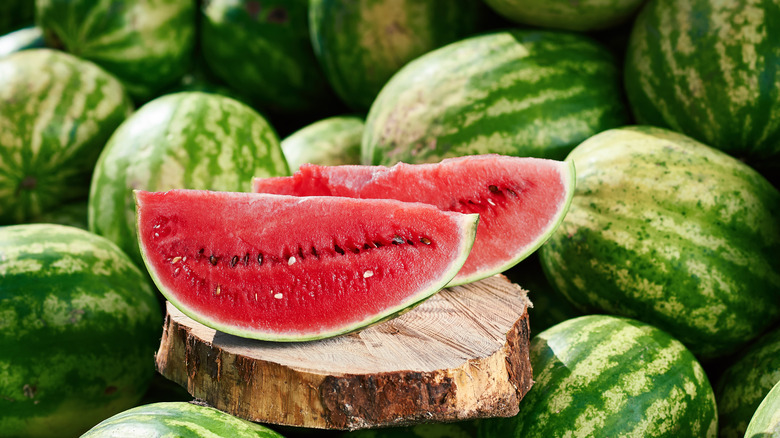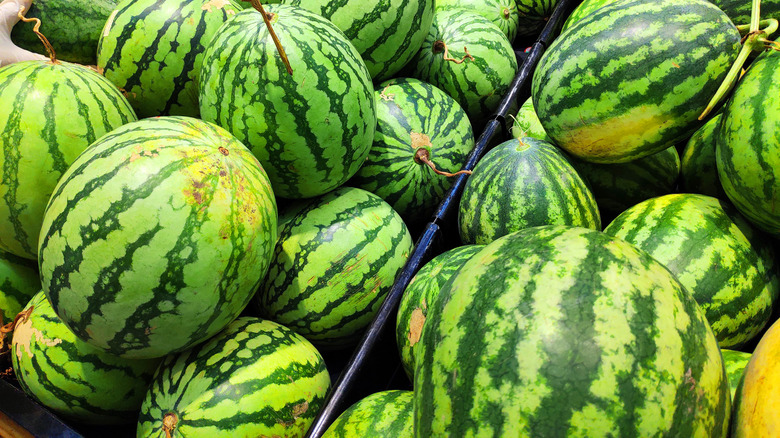The Ancient Truth About The Origins Of Watermelons
Watermelons are one of the primary staples of American summer cuisine. However, we're hardly the first to recognize the pure joy of consuming these massive members of the Curcurbitaceae plant clan, which includes cucumbers and pumpkins. Known botanically as Citrullus lanatus, the watermelons that are located on your grocery store's produce aisle have an impressive 1,200 sibling varieties from around 96 countries, according to the Integrated Pest Management Department of the University of Missouri.
Though watermelons have existed for at least 5,000 years, the debate persists over whether it's a fruit or vegetable. The National Watermelon Promotion Board weighs in on the discussion, stating that the sweet, juicy picnic staple is botanically a fruit. However, it's grown using the same methods as vegetable crops (via HuffPost). This makes it fall into a gray area between fruits and vegetables. The melon is also treated as either dependent upon locality (like how Oklahoma declared it to be the state's official vegetable per The Guardian).
While many prefer to consume watermelon straight from the vine as they would a fruit, the rinds are sometimes pickled. It is also used as an ingredient in many different dishes. According to Dumpling Sisters, stir-frying the rind like you would a vegetable has been a staple in certain recipes from China, where the watermelon arrived as early as the 10th century (via the Integrated Pest Management Department at the University of Missouri). However, its consumption reaches further back in history.
Watermelons travel the globe on ancient journey
Watermelon, named as such for its 92% water content, is thought to have originally served as an ancient source for hydration. The Integrated Pest Management Department of the University of Missouri states that in the Kalahari Desert region of southern Africa, indigenous tribes likely roasted and consumed watermelon seeds as well as its liquid-filled flesh. Paintings and tomb-embellishments depict watermelons in ancient Egyptian civilization starting around 2,000 BCE, according to National Geographic. According to the United States Department of Agriculture (USDA), the Moors later introduced watermelon to the Iberian Peninsula in Europe.
So, why are watermelons considered such an American fruit or vegetable? Perhaps because they've been a part of the American story for nearly 400 years. Some historians believe that they were introduced during the African slave trade while other evidence shows that Massachusetts settlers and Native Americans were growing them since the early- to mid-1600s. Watermelons now thrive as commercial crops in 44 states with a value of over $500 million, with Georgia, California, Texas, Florida, and Arizona leading production, per the USDA.
Regardless of where this larger-than-life fan-favorite fruit or vegetable's origin, many agree with a quote by American word-master Mark Twain who is attributed by National Geographic as saying, "[Watermelon is the] chief of this world's luxuries... When one has tasted it, he knows what the angels eat."

